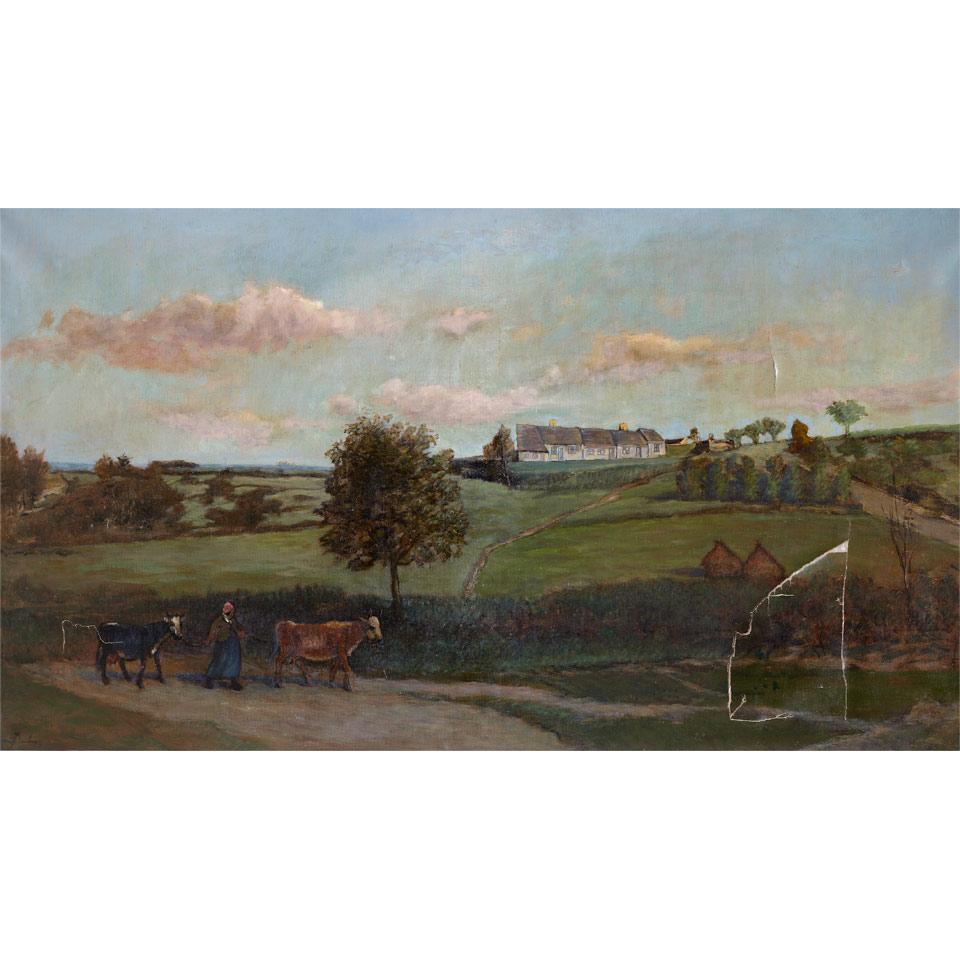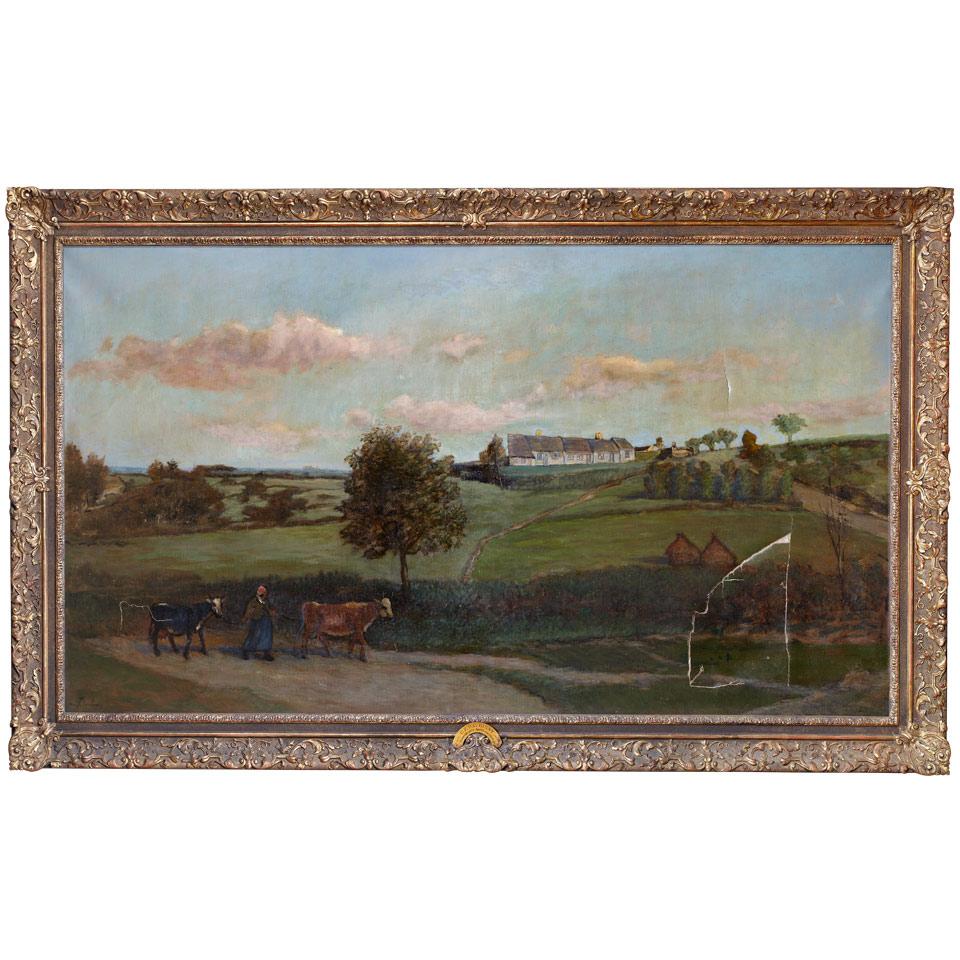Lot 213
Charles-Francois Daubigny (1817-1878)

Lot 213 Details
Charles-Francois Daubigny (1817-1878), French
AU FLANC DE LA COLLINE (VALMONDOIS), 1874 (FORMERLY CALLED: BONNEVILLE PRES AUVERS-SUR-OISE)
Oil on canvas; signed “Daubigny” lower left. Hellbranth, No. 193.
43" x 79.5" — 109.2 x 201.9 cm.
Estimate $30,000-$40,000
Additional Images

Provenance:
Widemer, Philadelphia as noted in Hellbranth;
Private Collection, Canada
Literature:
Robert Hellbranth, “Charles-Francois Daubigny 1817-1878”, (catalogue raisonne), p.72, No. 193, illustrated as “Au Flanc de la Colline (Valmondois)”.
Note:
Daubigny's finest pictures were painted between 1864 and 1874. When he was nine, his mother sent him to live with a caretaker in Valmondois in the Val d’Oise region. He left Valmondois in 1826 but remained attached to this village and the location often figured as a key component of the inspiration for his later works. He began by painting historical and religious works but soon turned to landscapes, painting rivers, beaches, and canals from a boat after having met the artist Camille Corot. In 1857 he bought a small boat christened “The Botin” which included a covered room which he turned into a small studio. He used this boat every summer for several years, floating along the Seine, capturing fragmentary moments of the light and landscape that he viewed along the river.
The catalogue raisonne describes the work as signed and dated 1874. Hellbranth dates the painting as 1874, however this lot is signed, lower left, but not dated.
Daubigny’s career began in the atelier of an academic artist but progressed beyond the borders of rigid training to become a symbol of inspiration for the coming movement of Impressionism. At the Salon of 1873 it became clear that Daubigny’s work had become more “impressionistic”, though it was a year before the term was even established.
Although this impressive large canvas requires restoration to tears in the canvas, executed a year later, it is a pivotal work standing as a symbol for the coming movement of impressionism.



